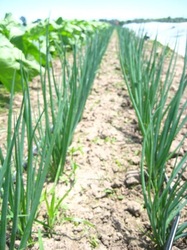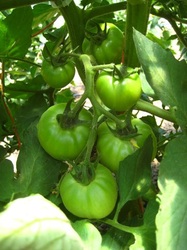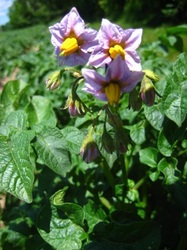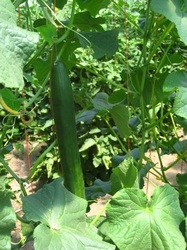A farm in spring
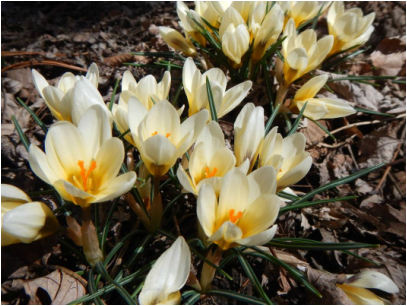
It ends this way: pathetic remnants of snow giving way to bare ground and a wind blowing with a softer edge. The fallow fields are warm and dry, and there’s a smudge of color at the woods edge. Birds shout claims to nesting grounds and chirp and whistle to attract mates, but it all sounds like music now. Spring time.
The chickens tumble out of the coop door in the morning eager to breakfast on bugs, weed seeds and worms, relishing the change from their winter rations of ground-up grain and an odd bin of vegetable scraps. They quickly settle into a routine: forage and scratch, bath in the dust, waddle into the nest to lay an egg, and back to foraging. Their work, laying eggs, they've begun in earnest when the days began to lengthen. Given the inverse proportion between some of the hens and the size of the eggs they lay, laying is work indeed.
Spring arrived this month one evening for me announced by a chorus of peepers and verified the next day with the return of turkey vultures. Sandhill cranes and robins, of course, came earlier on the hope of spring but as usually is the case, they were disappointed. Spring is that way. Everyone from poets to weathermen are quick to point out its contradictions and contrasts; its disappointments and surprises.
April itself is, well, full of surprises — snow and rain, cold and warm. Cloudy, dreary days give way to these amazing days of light. The April sun is like no other. Pay attention. It seems to radiate from everything. It is without the emotion of winter sunlight — amber-toned and full of regret. April sunlight is pure energy, without mass, and electric. It is unalloyed. It is white like neon light. It’s like the first light, as though the sun itself was born each April.
Scientist can probably explain this peculiar effect, the seeming purity of the light, but explaining it is like finding out that clouds aren't for standing on and seeing if heaven really exist.
April, famous for showers, regularly douses the light, but each time it comes back and is changed, just a little. The first spring light is much different than the last. The light warms and begins to soften as spring ages. Soon the leaves sprout and the land greens, adding a weight of responsibility to the sunlight that seems absent in early April light. The sunlight develops a character that will accent the languid days to come. I don't like that light less, just the early April light more.
Spring is complete when the smoking tractors test their strength as the heavy, resting land is made ready to grow food. Farmers plan and plant in spring — some with mathematical precision and others by intuition and tradition and most by a combination. Somehow climate change seems to make a mockery of both. But I guess that has been the farmer's bane — nature is not an understanding partner.
And so with one part faith in a seed, one part grit and determination, and one part serendipity, the farmer plants, takes his chances and hopes for the best. For produce farmers this drama is played out for every different vegetable and fruit and for every succession of crop, but all farmers face risk and bank on the reward. It's a season of hope and despair, and each given its due.
Cultivating a good farm during the year...
On any farm, like Pinehold Gardens, life follows a circular pattern. The seasons that seem linear and segmented in the city, punctuated by holidays and vacations, actually meld on the farm into a continuous ebb and flow that depends entirely on the sun. The nature of the work changes, but the work is ongoing. Farms like ours plant and harvest almost continually when the sun arcs high above the horizon, and it is only when the length of the nights over take the days that the work that is not planting or harvesting is done.
But there are more busy times and less busy times in this flow. As soon as ground can be worked, the planting of early season crops begins. They aren’t the first plants in the ground, however. That was the garlic planted the previous fall along with crops such as rye grass and vetch, planted to help keep the soil alive and healthy year around. And there is also the crops increasingly planted and harvested year around in plastic covered hoophouses. You see, where is the beginning and where is the end?
After the spring equinox, that is the busiest time of all. Farmers have to make hay or vegetables when the sun shines, and the time between spring equinox and autumnal equinox is the sunniest time. That is when the farm becomes a community of people, of plants and of animals. It is a time, too, of long, long days.
The essence of a good farm, of this farm, is its relationship to food and the communities that the farm supports. Cultivation, taking from its root in culture, is all about tending the connections between the life systems on a farm and the life in the community off the farm, providing the food necessary for a people and for a soil, and for a farm and a city to prosper and stay healthy. When the communities in the soil, on the farm and off the farm form a symbiosis, then all do their part to make sure the food is good, the food is healthy and the food is plentiful. Cultivating relationships, that is the real work of a good farm.
And then, only when the sun is low on the horizon, only when the planting and harvesting is done there is still other work to do, but the work is different and the pace slower. In the stillness that begins to fill the days then the land, then the communities, then the people, then animals all take a deep breath and a silence, a silence not heard, not felt, not appreciated since well after the garlic was planted, settles in. The farm, the farmer, prepares for, eases into shorter days and long, cold nights.
Soon, maybe too soon, maybe not soon enough, the sun in its ceaseless arc through the sky, is high enough again on the horizon, and the work changes in tempo and focus but not in meaning and purpose. The work is always toward building communities, strengthening relationships, helping the people, helping the plants, helping the animals contribute to this fundamental link to all our well being called a good farm.
But there are more busy times and less busy times in this flow. As soon as ground can be worked, the planting of early season crops begins. They aren’t the first plants in the ground, however. That was the garlic planted the previous fall along with crops such as rye grass and vetch, planted to help keep the soil alive and healthy year around. And there is also the crops increasingly planted and harvested year around in plastic covered hoophouses. You see, where is the beginning and where is the end?
After the spring equinox, that is the busiest time of all. Farmers have to make hay or vegetables when the sun shines, and the time between spring equinox and autumnal equinox is the sunniest time. That is when the farm becomes a community of people, of plants and of animals. It is a time, too, of long, long days.
The essence of a good farm, of this farm, is its relationship to food and the communities that the farm supports. Cultivation, taking from its root in culture, is all about tending the connections between the life systems on a farm and the life in the community off the farm, providing the food necessary for a people and for a soil, and for a farm and a city to prosper and stay healthy. When the communities in the soil, on the farm and off the farm form a symbiosis, then all do their part to make sure the food is good, the food is healthy and the food is plentiful. Cultivating relationships, that is the real work of a good farm.
And then, only when the sun is low on the horizon, only when the planting and harvesting is done there is still other work to do, but the work is different and the pace slower. In the stillness that begins to fill the days then the land, then the communities, then the people, then animals all take a deep breath and a silence, a silence not heard, not felt, not appreciated since well after the garlic was planted, settles in. The farm, the farmer, prepares for, eases into shorter days and long, cold nights.
Soon, maybe too soon, maybe not soon enough, the sun in its ceaseless arc through the sky, is high enough again on the horizon, and the work changes in tempo and focus but not in meaning and purpose. The work is always toward building communities, strengthening relationships, helping the people, helping the plants, helping the animals contribute to this fundamental link to all our well being called a good farm.






